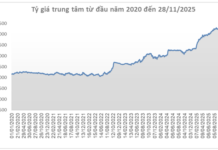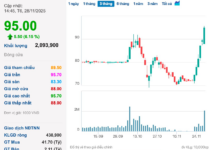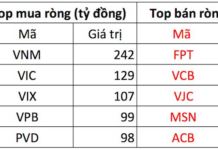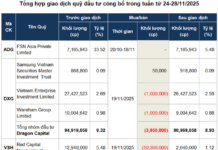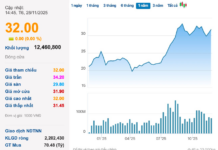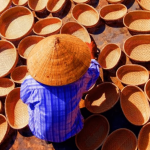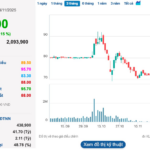
Illustrative Image
Vietnam boasts a range of top-ranking export commodities, including rice, coffee, cashews, phones, textiles, and, notably, footwear. The latter consistently brings in billions of USD in revenue each month.
According to preliminary statistics from the General Department of Vietnam Customs, footwear exports in May generated 1.99 billion USD, an increase of 8.3% compared to April 2024. Cumulatively, in the first five months of the year, footwear exports brought in more than 8.6 billion USD, up 7.2% from the same period last year.

Analyzing the main markets, the US remains the largest importer of Vietnamese footwear. Specifically, exports to the US reached over 3.09 billion USD in the first five months of the year, up 12.5% from the same period last year.
Ranking second is the Chinese market, with over 765 million USD in the same period, an increase of 8.8% over the previous year. Notably, the Netherlands has risen to become Vietnam’s third-largest importer, with over 635 million USD, a significant 60% increase compared to the same period last year, surpassing Belgium.
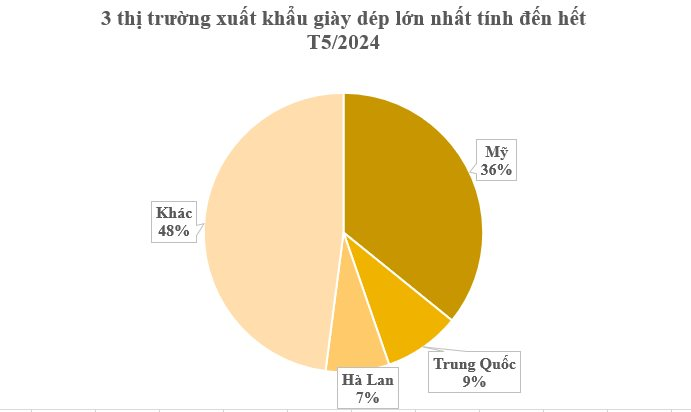
In terms of scale in the global market, Vietnam currently ranks second in footwear exports (after China), with an estimated export volume accounting for 10% of the world’s total, reaching 150 markets such as the US, EU, China, Japan, and the UK. In 2020, Vietnam was even the largest exporter of canvas shoes in the world by value, surpassing China. Together with Italy, the total export turnover of these three countries accounts for more than half of the global footwear market.
In 2023, footwear exports brought in more than 20.2 billion USD. Thus, for 26 consecutive years (since 1998), footwear exports have consistently been among the billion-dollar export groups and among those with high turnover.
Over time, footwear export enterprises have made changes by focusing on expanding into new markets and diversifying their product portfolios to enrich their order books. Moreover, to retain orders from major markets, many businesses are now handling orders of various sizes while striving to find customers through green production methods to adapt to the market’s increasingly demanding requirements.
According to experts, in the global footwear industry value chain, Vietnam primarily operates in the cutting, sewing, gluing, and assembling stages, using materials provided by foreign companies. In the value structure of a pair of shoes, raw material costs account for up to 70%. Therefore, although Vietnam’s export turnover is large, the added value is low. This decisive factor necessitates the development of the material industry for the footwear sector.
In the coming time, the footwear industry will need to venture into the production of higher-end shoe lines. Thus, investments in raw material development are imperative, and domestic enterprises should focus on new and high-quality technologies. Emphasizing the production of mid-range and high-end products to meet diverse market demands is essential to realizing the dream of “Make in Vietnam” and propelling Vietnamese-branded footwear to the world stage.
The most extensive bribery case ever in Thanh Hoa: Numerous suspects prosecuted for “Giving and Receiving Bribes”
The Provincial Security Investigation Agency (PSIA) of Thanh Hoa province announced on January 31st that it has made the decision to initiate a prosecution against 23 individuals in connection with the offenses of “Accepting bribes” and “Giving bribes” as stipulated in Article 354(3) and Article 364(2) of the Criminal Code.
Accelerating disbursement of the 120 trillion VND credit package for social housing
Deputy Prime Minister Trần Hồng Hà has recently issued directives regarding the implementation of the 120,000 billion VND credit package for investors and buyers of social housing, workers’ housing, and projects for the renovation and construction of apartment buildings.
Vietnam’s Irresistible ‘Specialty’ That China Desperately Wants to Revive: Highly Popular from the US to Asia, Bringing in Millions of Dollars
Vietnam is one of the largest exporting countries in the world, along with China and the Philippines.






